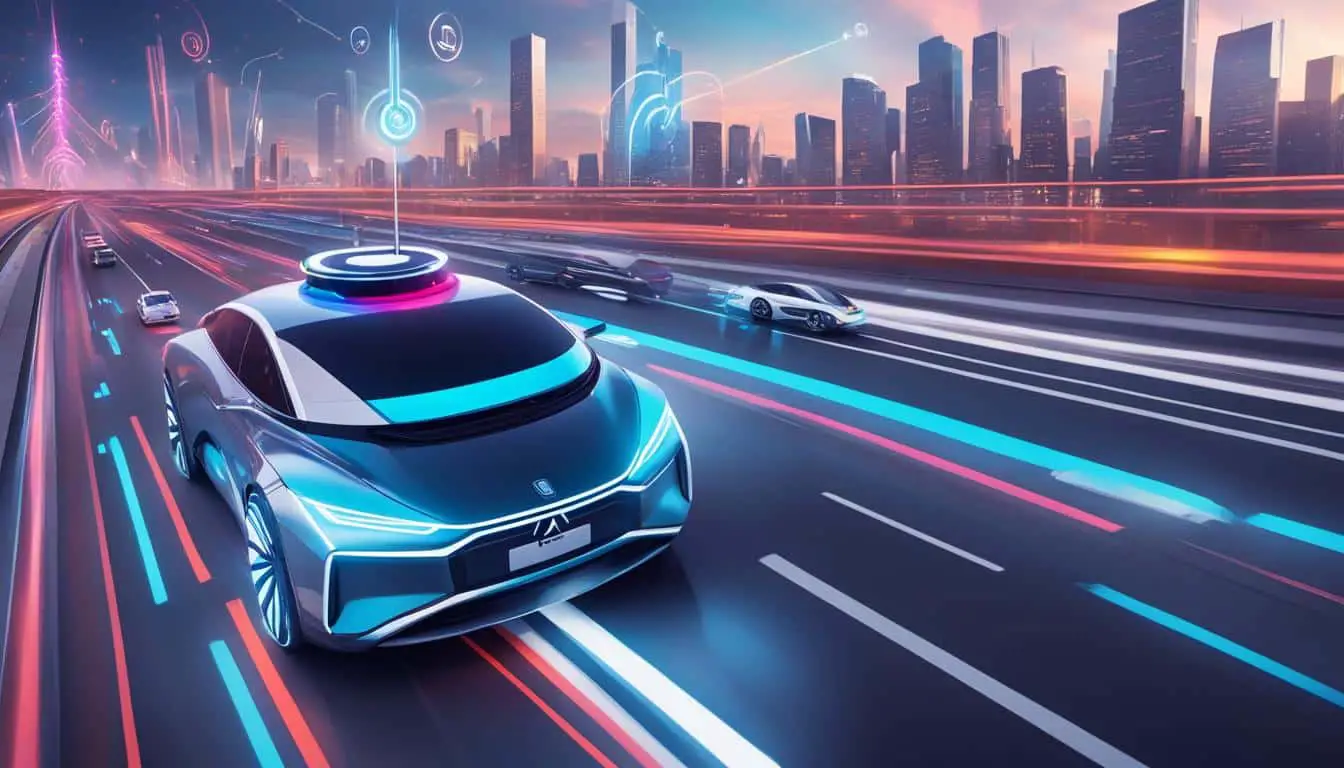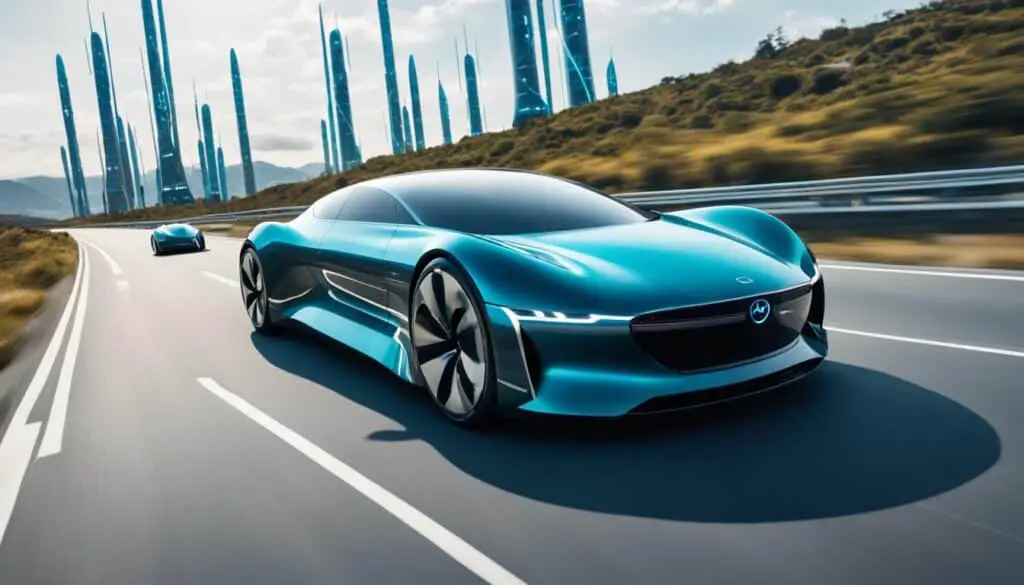
The Role of 5G Technology in Advancing Autonomous Cars
As technology continues to advance, the world of transportation is undergoing a significant transformation. One of the most exciting and revolutionary developments is the integration of 5G technology in autonomous vehicles. The combination of 5G and autonomous driving has the potential to reshape the way we travel, making it safer, more efficient, and highly connected.
Autonomous vehicles, also known as self-driving cars, rely on advanced technologies to operate without human intervention. These vehicles use a combination of sensors, artificial intelligence, and communication systems to navigate their surroundings and make informed decisions. This is where 5G technology comes into play.
The 5G network provides faster and more reliable communication networks, which are crucial for the development and operation of autonomous cars. With the ability to make autonomous decisions, communicate and cooperate with each other, autonomous vehicles heavily rely on the foundations provided by 5G technology.
Key Takeaways:
- 5G technology plays a crucial role in advancing autonomous car technology.
- The 5G network offers faster and reliable communication networks, essential for the development and operation of autonomous vehicles.
- Autonomous vehicles rely on the foundations provided by 5G technology for autonomous decisions, communication, and cooperation.
- 5G technology enables intelligent transport infrastructure, allowing for improved driving comfort and access to real-time data updates.
- 5G offers special features for safety-relevant requirements, such as improved sensor fusion and real-time communication, ensuring the safety and reliability of autonomous vehicles.
Benefits of 5G for Autonomous Driving
5G technology provides numerous advantages for the advancement of autonomous driving. The benefits of 5G in self-driving cars have a profound impact on safety, data processing, and overall driving experience. Let’s delve into the key benefits of 5G technology for autonomous vehicles:
1. Network Slicing: Prioritized Communication
One of the standout advantages of 5G for autonomous driving is network slicing. With network slicing, safety-relevant notifications can be prioritized, ensuring efficient and timely communication for self-driving cars. This prioritization allows autonomous vehicles to receive critical information without any delays, enhancing their ability to make intelligent decisions on the road.
2. Real-time Data Analysis and Processing
The data processing and storage capabilities of 5G enable faster and more accurate decision-making for autonomous vehicles. Real-time data analysis and processing at the network’s edge enable autonomous cars to act swiftly and responsively. This capability is crucial in ensuring the safety and efficiency of self-driving cars, as they can process the vast amount of data generated by their sensors in real-time, resulting in faster and more informed decision-making.
3. Enhanced Connectivity and Traffic Optimization
The expansion of the 5G network significantly improves the scope of autonomous mobility. With direct and fast data communication between vehicles and infrastructure, 5G enables improved traffic flow and optimized travel speeds. This enhanced connectivity paves the way for more efficient and seamless autonomous journeys, reducing congestion and travel time.
4. New Opportunities for Personalized Services
The integration of 5G technology in autonomous vehicles opens up new possibilities for personalized services and experiences. With the connectivity and communication capabilities of 5G, self-driving cars can provide passengers with tailored services, such as personalized entertainment, interactive experiences, and customized travel recommendations. This personalized touch enhances the overall passenger experience and transforms autonomous journeys into enjoyable and productive experiences.
“5G technology revolutionizes autonomous driving by providing prioritized communication, faster data processing, improved connectivity, and personalized services for passengers.”
By harnessing the benefits of 5G technology, autonomous driving is set to redefine mobility by ensuring safer roads, efficient traffic management, and enhanced passenger experiences. The integration of 5G in self-driving cars represents a significant milestone in the evolution of transportation.
The Impact of 5G on Safety and Reliability
When it comes to autonomous vehicles, safety and reliability are of utmost importance. That’s where the game-changing capabilities of 5G technology come into play. With its advanced features and lightning-fast speeds, 5G significantly enhances the safety and reliability of self-driving cars.
Enhanced Sensor Fusion for Precise Data Transfer
One of the key safety features enabled by 5G is improved sensor fusion. This technology allows for precise and accurate data transfer between sensors in autonomous vehicles, enhancing object detection and perception. With 5G, self-driving cars can rely on a seamless flow of data, enabling them to make informed decisions and navigate their surroundings with enhanced precision.
Real-Time Communication for Accident Prevention
Thanks to the real-time communication capabilities of 5G, vehicles, infrastructure, and even pedestrians can stay connected and exchange important information instantly. This level of communication plays a crucial role in accident prevention. By sharing real-time data, vehicles can anticipate and respond to potential hazards, creating a safer driving experience for everyone on the road.
Additionally, 5G enables vehicles to communicate with infrastructure elements such as traffic lights and road signs. This opens up the possibility of real-time updates on road conditions, traffic congestion, and other relevant information. As a result, autonomous vehicles can navigate more efficiently, reducing the risk of accidents and traffic jams.
Redundancy and Backup Systems for Uninterrupted Decision-Making
Even in the event of a network connection loss, 5G ensures that autonomous vehicles can continue to make informed decisions. This is made possible through redundancy and backup systems provided by 5G networks. These systems ensure that vehicles have access to available data, allowing them to adapt and react appropriately, minimizing the potential for disasters.
Contributing to Advanced Traffic Management Systems
By integrating 5G technology, autonomous vehicles contribute to the development of advanced traffic management systems. These systems optimize traffic patterns and minimize delays, improving overall safety on the road. 5G enables vehicles to communicate with each other and traffic management centers seamlessly, creating a coordinated and efficient flow of traffic.
Moreover, 5G facilitates the collection and analysis of massive amounts of data related to traffic patterns and driver behavior. This data can be used to identify areas of improvement, develop proactive safety measures, and further enhance the reliability of autonomous driving.
| Safety Benefits of 5G in Autonomous Vehicles | Reliability Benefits of 5G in Autonomous Vehicles |
|---|---|
| Improved sensor fusion for precise object detection | Continuous and reliable data connectivity |
| Real-time communication for accident prevention | Redundancy and backup systems for uninterrupted decision-making |
| Seamless communication with infrastructure elements | Contributing to advanced traffic management systems |

With its ability to significantly improve safety and reliability in autonomous vehicles, 5G technology is a key driver in revolutionizing the future of transportation. By enabling precise sensor fusion, real-time communication, and advanced traffic management systems, 5G ensures that self-driving cars can operate with confidence, paving the way for safer roads and more efficient journeys.
Infrastructure Considerations for Integrating 5G in Autonomous Vehicles
Integrating 5G technology into autonomous vehicles requires careful consideration of infrastructure requirements. The success of autonomous driving heavily relies on uniform 5G network coverage. This is especially crucial in densely populated areas and rural regions, where seamless connectivity is paramount for the safe and efficient operation of autonomous vehicles.
To address the challenges associated with 5G deployment, strategic placement of 5G cell towers and small cells is necessary. By strategically positioning these network infrastructure elements, we can optimize signal strength and coverage to ensure a reliable and uninterrupted 5G connection for autonomous vehicles.
Collaboration among telecommunication companies, automotive manufacturers, tech firms, and policymakers is crucial. Such partnerships will help establish a cohesive ecosystem that ensures interoperability, safety, and privacy in autonomous vehicles’ communication on a 5G network. It is essential to develop standardized protocols and frameworks that enable seamless integration and communication among different vehicle and network technologies.
Edge computing plays a pivotal role in 5G infrastructure development for autonomous vehicles. By enabling data processing at the network’s edge, edge computing reduces latency and enhances the efficiency and safety of autonomous vehicle operations. Real-time decision-making and communication are made possible through the low-latency capabilities offered by edge computing.
As the integration between autonomous vehicles and 5G networks grows, cybersecurity measures must be implemented to protect against potential threats and breaches. The interconnectedness of autonomous vehicles with the 5G network makes them vulnerable to cyberattacks. Robust security protocols, encryption mechanisms, and continuous monitoring systems are vital to safeguard the integrity and privacy of autonomous vehicle systems.
The infrastructure considerations for integrating 5G in autonomous vehicles involve a multidisciplinary approach. It requires collaboration, innovation, and careful planning to establish a seamless and reliable 5G network that enables the widespread adoption of autonomous driving.

Infrastructure Considerations for 5G Integration
| Challenge | Potential Solution |
|---|---|
| Uniform 5G Network Coverage | Strategic placement of 5G cell towers and small cells to optimize coverage in all areas, including densely populated and rural regions. |
| Collaboration | Partnerships between telecommunication companies, automotive manufacturers, tech firms, and policymakers to establish interoperability, safety, and privacy standards. |
| Edge Computing | Utilizing edge computing capabilities to enable faster data processing, reduce latency, and enhance operational efficiency and safety. |
| Cybersecurity | Implementation of robust security protocols, encryption mechanisms, and continuous monitoring systems to protect against cyber threats and breaches. |
Conclusion
5G technology is revolutionizing the future of autonomous vehicles, playing a critical role in their development and operation. The fast and reliable communication networks provided by 5G serve as the foundation for the seamless functioning of self-driving cars. The benefits of 5G in autonomous driving are far-reaching. Improved safety measures, enhanced data processing and analysis capabilities, and seamless communication between vehicles and infrastructure are just a few of the advantages that 5G brings to the table.
One of the key advantages of 5G technology in autonomous driving is its ability to prioritize safety-relevant notifications, ensuring efficient and timely communication between vehicles on the road. Moreover, the integration of 5G enables faster decision-making by enabling real-time data analysis and processing at the network’s edge, leading to more accurate and informed autonomous driving decisions.
While the integration of 5G into the autonomous driving ecosystem poses challenges such as infrastructure development, data security, and regulatory frameworks, the potential rewards are immense. Autonomous vehicles operating seamlessly, efficiently, and safely is within our reach, thanks to the transformative power of 5G technology. The future of self-driving cars is bright, and 5G is a key driver in making it a reality.
FAQ
What role does 5G technology play in advancing autonomous cars?
5G technology plays a crucial role in advancing autonomous car technology by providing faster and reliable communication networks, which are essential for the development and operation of autonomous vehicles.
What are the benefits of 5G for autonomous driving?
Some benefits of 5G for autonomous driving include network slicing for prioritizing safety-relevant notifications, faster and more accurate decision-making through real-time data analysis, and improved traffic flows and optimized travel speeds through direct and fast data communication.
How does 5G impact safety and reliability in autonomous vehicles?
5G enhances safety and reliability in autonomous vehicles by enabling improved sensor fusion for precise data transfer between sensors, real-time communication to prevent accidents, and redundancy and backup systems for informed decision-making even in the event of a network connection loss.
What are the infrastructure considerations for integrating 5G in autonomous vehicles?
For integrating 5G in autonomous vehicles, uniform network coverage is essential, along with strategic placement of 5G cell towers and small cells. Collaboration among telecommunication companies, automotive manufacturers, tech firms, and policymakers is crucial to establish a cohesive ecosystem. Edge computing also plays a pivotal role in 5G infrastructure, enhancing efficiency and safety.
What is the role of 5G technology in the future of autonomous vehicles?
5G technology plays a pivotal role in advancing the future of autonomous vehicles by providing fast and reliable communication networks, improving safety, enhancing data processing and analysis, enabling seamless communication between vehicles and infrastructure, and offering economic and environmental advantages.
Source Links
- https://www.telekom.com/en/company/details/5g-network-as-foundation-for-autonomous-driving-561986
- https://tecknexus.com/5g-network/private-networks-5g-magazine-dec-2023-edition/5g-and-autonomous-vehicles-navigating-connected-road/
- https://utilitiesone.com/5g-potential-role-in-autonomous-vehicles-and-intelligent-transportation-systems
